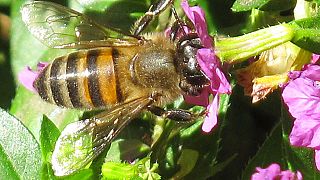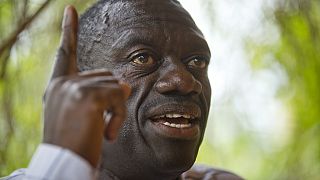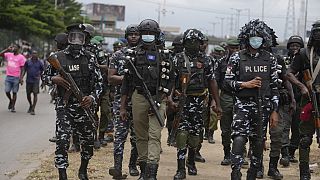Kenya
Kenya has embarked on its biggest single rhino relocation project ever and began the difficult work Tuesday of tracking, darting and moving 21 of the critically endangered beasts hundreds of miles in trucks to a new home.
A previous attempt at moving rhinos in the East African nation in 2018 was a disaster as all 11 of the animals that were relocated died.
The latest project experienced early troubles, too, as a rhino targeted for moving on Tuesday was not subdued by a tranquilizer dart shot by a wildlife ranger from a helicopter.
Rangers attempted to restrain the rhino with a rope but it went into a stream and the team of rangers decided to release the animal to make sure it was not harmed.
Wildlife officials have stressed the project will be difficult and take time, likely weeks.
The black rhinos in this relocation are a mix of males and females and are being moved from three conservation parks to the private Loisaba Conservancy in central Kenya, the Kenya Wildlife Service said.
The relocation shows the relative success of Kenya in reviving its black rhino population, which dipped below 300 in the mid-1980s because of poaching, raising fears that the animals might be wiped out forever in a country famous for its rich wildlife.
Kenya now has nearly 1,000 black rhinos, according to the wildlife department. That’s the third biggest black rhino population in the world behind South Africa and Namibia.
There are just 6,487 wild rhinos left in the world, according to rhino conservation charity Save The Rhino, all of them in Africa.
The rhinos are being moved because there are too many in the three parks and they need more space to roam and, hopefully, to breed.
"The existing sanctuaries have become overcrowded and that’s another challenge. So, we have become a victim of our own success, where you will have territorial fighting and male rhinos killing each other,” Tom Sylvester, the chief executive of Loisaba Conservancy explained.
Rhinos are generally solitary animals, especially the males, and are at their happiest in large territories.
Kenyan authorities say they have relocated more than 150 rhinos in the past decade.
Six years ago, Kenya relocated 11 rhinos from Nairobi to a different sanctuary in the south of the country. All of them died soon after arriving at the sanctuary.
"It is very important that we learn from mistakes of the past – it was that things like water conditions were critically important… So, habitat water and then security,” Sylvester said.
Some of the 21 rhinos, which can each weigh over a ton, are being transferred from the Nairobi National Park and will make a 300-kilometer (186-mile) trip in the back of a truck to Loisaba. Others will come from parks closer to Loisaba.
Kenyan wildlife authorities say the country is aiming to grow its black rhino population to about 2,000, which they believe would be the ideal number considering the space available for them in national and private parks.












00:51
One-Month-Old Southern White Rhino Calf Takes First Outdoor Steps at Whipsnade Zoo
01:33
Delegates meet in Colombia to address global biodiversity crisis
01:42
World Rhino Day: Africa still needs to step up efforts to preserve the species
01:48
Scientists edge closer to saving the Northern White Rhino from extinction
01:50
Former poacher spreads conservation message in rural Zimbabwe
01:15
World elephant day: advocating for the future of elephants